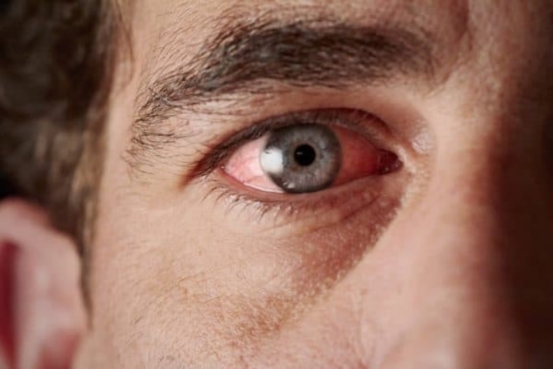樹木葬の費用を徹底比較!安く安心できる自然葬の選び方
Thyroid Eye Disease (TED): Early Symptoms, Causes, and Effective Management
Thyroid Eye Disease (TED) is a progressive autoimmune condition that affects the eyes, commonly linked to thyroid disorders such as Graves' disease. If left untreated, TED can cause eye discomfort, vision impairment, and long-term complications. Recognizing the early warning signs and seeking prompt medical attention can help reduce the severity of symptoms and protect long-term eye health.
Thyroid Eye Disease (TED) is a progressive autoimmune condition that affects the eyes, commonly linked to thyroid disorders such as Graves' disease. If left untreated, TED can cause eye discomfort, vision impairment, and long-term complications. Recognizing the early warning signs and seeking prompt medical attention can help reduce the severity of symptoms and protect long-term eye health.

What is Thyroid Eye Disease?
TED, also referred to as thyroid-associated orbitopathy, is an inflammatory condition in which the immune system mistakenly attacks the muscles, fat, and tissues around the eyes. This results in swelling, irritation, and changes in eye movement, leading to symptoms ranging from mild irritation to severe vision problems.
While TED is most often associated with hyperthyroidism and Graves’ disease, it can also occur in individuals with hypothyroidism or normal thyroid function.
Early Symptoms of Thyroid Eye Disease
Detecting TED in its early stages can help prevent complications and allow for timely intervention. In many cases, early symptoms may be mistaken for common eye conditions like dry eye syndrome or seasonal allergies.
Initial Warning Signs:
- Mild swelling or puffinessaround the eyes
- Dry, irritated, or gritty sensationin the eyes
- Increased sensitivity to light (photophobia)
- Excessive tearing or watery eyes
- A slight "staring" appearancedue to eyelid retraction
- Pressure or discomfort behind the eyes
If these symptoms persist or worsen, it's important to seek medical evaluation to rule out TED.
Progression of TED: Moderate to Severe Symptoms
As TED advances, symptoms become more pronounced and potentially disabling. Individuals may experience:
- Bulging or protruding eyes (proptosis)due to tissue swelling
- Persistent redness and swelling of the eyelids
- Difficulty moving the eyes, leading to pain with eye movement
- Double vision (diplopia)caused by misalignment of the eyes
- Blurry visionor trouble focusing on objects
These symptoms can interfere with daily activities, making it difficult to read, drive, or work on a computer.
Severe TED Symptoms That Require Immediate Attention
Without treatment, TED can progress to a critical stage, leading to serious vision complications. Seek immediate medical help if you experience:
- Sudden loss of vision or major visual disturbances
- Severe eye pain or intense pressure behind the eyes
- Inability to fully close the eyes, resulting in extreme dryness
- Loss of peripheral vision or difficulty distinguishing colors
These symptoms may indicate optic nerve compression (dysthyroid optic neuropathy, DON), which can lead to permanent vision loss if not treated promptly.
Who is at Risk for Thyroid Eye Disease?
Several factors contribute to the development and progression of TED:
✔ Thyroid Disorders – Most commonly affects individuals with Graves' disease, but can also occur in hypothyroid or euthyroid patients.
✔ Smoking – One of the most significant risk factors, as smoking worsens inflammation and increases the severity of TED.
✔ Gender & Age – More common in women, particularly between the ages of 40 and 60, although men may experience more severe cases.
✔ Genetic Factors – A family history of thyroid disease or autoimmune conditions increases susceptibility.
✔ Radioactive Iodine Therapy – Used to treat hyperthyroidism, but may worsen TED symptoms in some cases.
Understanding these risk factors can help individuals take preventive steps and monitor for early symptoms.
Diagnosing Thyroid Eye Disease
A comprehensive eye evaluation by an ophthalmologist or endocrinologist is essential to confirm a TED diagnosis. Tests may include:
1️⃣ Eye Examination – Evaluates eye movement, eyelid function, and overall eye health.
2️⃣ Thyroid Function Tests – Blood tests to check thyroid hormone levels and autoimmune markers.
3️⃣ Imaging Studies (CT Scan or MRI) – Detects swelling, inflammation, and optic nerve compression.
4️⃣ Visual Field Tests – Measures peripheral vision and potential optic nerve damage.
5️⃣ Ocular Motility Tests – Assesses double vision severity and eye misalignment.
Early diagnosis helps guide treatment decisions and improves long-term prognosis.
Treatment Options for Thyroid Eye Disease
TED treatment depends on the severity of symptoms and whether the disease is in an active (progressive) or stable phase.
1. Lifestyle Adjustments for Mild TED
For mild cases, self-care strategies can help reduce discomfort and prevent worsening symptoms:
- Use artificial tearsto relieve dryness and irritation.
- Wear sunglassesto protect against light sensitivity and environmental irritants.
- Elevate your head while sleepingto reduce morning eye swelling.
- Quit smoking, as it significantly worsens TED and delays healing.
- Manage thyroid functionthrough medication or other recommended treatments.
2. Medications for Moderate to Severe TED
- Corticosteroids (e.g., prednisone)– Help reduce inflammation and swelling.
- Tepezza (teprotumumab)– FDA-approved drug that targets TED inflammation, reduces eye bulging, and improves double vision.
- Radiation Therapy– Sometimes used to control inflammation in the eye muscles.
3. Surgical Treatments for Severe TED
For individuals with advanced TED, surgery may be necessary to correct vision problems and relieve pressure on the eyes:
- Orbital Decompression Surgery– Expands the eye socket to reduce bulging and relieve pressure on the optic nerve.
- Strabismus Surgery– Aligns the eye muscles to correct double vision.
- Eyelid Surgery– Improves eyelid closure to protect the cornea from excessive dryness.
Preventing and Managing TED Long-Term
While TED cannot always be fully prevented, proactive measures can help reduce its impact:
✔ Quit Smoking – The most effective way to lower TED severity and progression.
✔ Manage Thyroid Levels – Regular monitoring and proper medication management are crucial.
✔ Protect Your Eyes – Use artificial tears, sunglasses, and limit screen time.
✔ Monitor for Symptoms – Regular check-ups with an eye specialist and endocrinologist are recommended.
Final Thoughts: Why Early Detection Matters
Thyroid Eye Disease can significantly impact vision, eye comfort, and overall well-being, but early intervention and proper treatment can prevent serious complications.
If you experience persistent eye discomfort, swelling, or vision changes, do not ignore the symptoms—seek medical advice as soon as possible. With effective treatments, lifestyle adjustments, and regular monitoring, TED can be managed successfully, ensuring better eye health and long-term quality of life.











